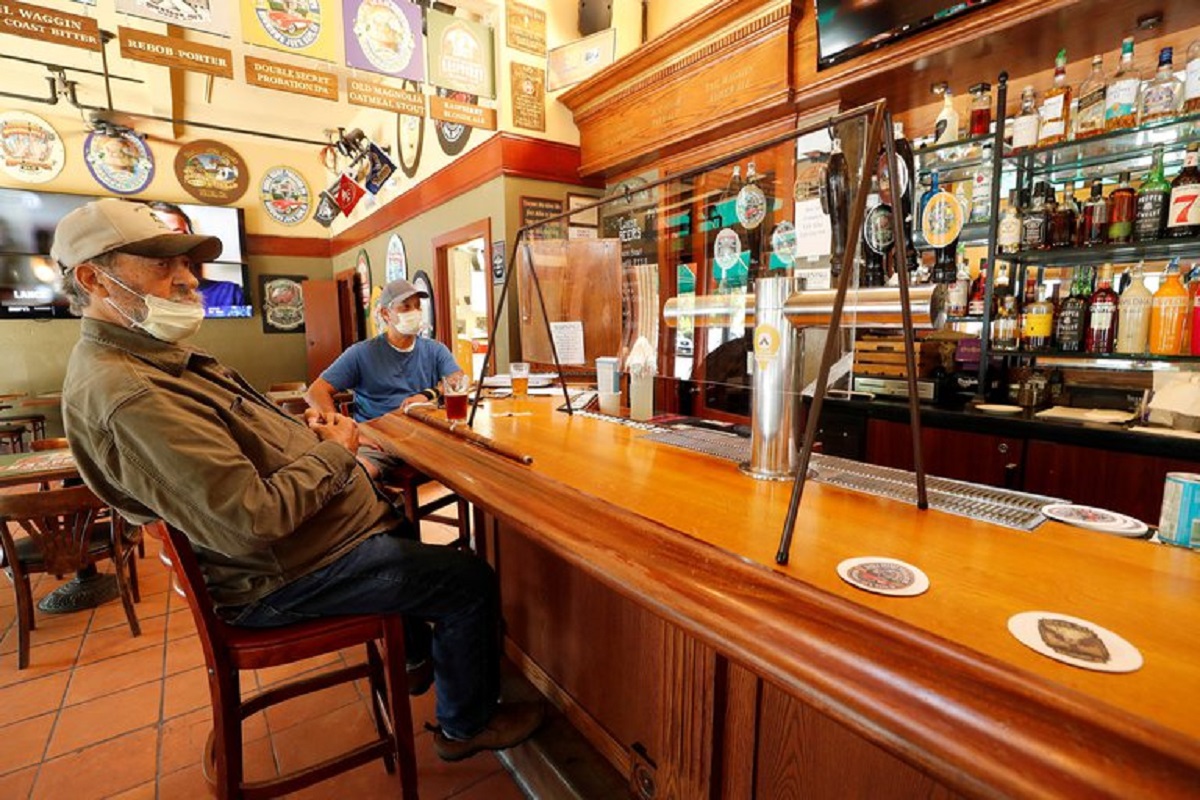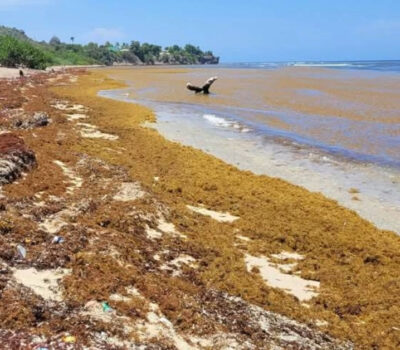Six months after the first case of coronavirus became known in China, a consensus begins to form in science about how people get infected.
Contrary to what was originally believed, there are many researchers who claim that it is rare to get coronavirus by contacting a contaminated surface, as well as during a fleeting and outdoor encounter with people who are infected. It doesn’t mean infections can’t be spread through those scenarios, it’s just less likely.
Instead, one of the most common circumstances for infections would be face-to-face encounters and interactions between people for prolonged periods.
The scenarios where the risk of contagion is high are in massive events, in poorly ventilated spaces and in places where people speak loudly or sing, as determined by a group of scientific experts.
These recent discoveries and agreements among the scientific community are helping companies and governments to devise reopening strategies that do not jeopardize public health, as economies try to get back on track.
Strategies include installing plexiglass or polymethylmethacrylate barriers, requiring and expanding the use of face masks in stores and other transit spaces, implementing good ventilation systems, and maintaining open windows when possible.
The results of the latest research, looking at measures taken in different cities, showed that quarantines (including orders to stay home, bans on large meetings, and business closings) did in fact prevent millions of infections and deaths across the world.
However, now that more is known about the coronavirus, cities can implement different mechanisms to avoid massive infections in the population.
That means improving protection in nursing homes and in houses where people live in crowded conditions, as well as reinforcing the call to maintain physical distance and the use of face masks, and reducing meetings in closed spaces.
“We shouldn’t be thinking about a shutdown, but about ways to keep physical distance,” Tom Frieden told The Wall Street Journal, executive director of Resolve to Save Lives, a nonprofit public health organization.
“This may include outdoor activities, walking or biking, shopping in stores from the sidewalk, and other innovative methods that facilitate the resumption of economic activity without reigniting the outbreak,” he added.
In all cases, recommendations for a reopening include mass testing, contact tracing, and isolation of people infected or potentially exposed to the virus.
An important factor in the transmission of the virus is that harmless actions, such as talking and breathing, produce respiratory particles that can disperse along the air currents and potentially infect people nearby.
Until now, health authorities have identified contact of people with respiratory droplets as the main mode of transmission of COVID-19. They can pass from person to person if they land in the eyes, nose, or mouth. But they generally tend to fall to the ground or other surfaces fairly quickly.
Some experts claim that the coronavirus can also be transmitted through even tinier droplets that float in the air longer than large ones and can be directly inhaled.
This is what may have happened at a restaurant in Guangzhou, China, where an infected diner who was not yet ill transmitted the virus to five other people sitting at adjacent tables. Ventilation in the space was poor, due to the exhaust fans being turned off, according to a study that analyzed conditions in the restaurant.
Those tiny droplets could have accumulated in the air, and the strong airflow from an air conditioning unit may have helped recirculate the particles, according to the study authors.
Sufficient ventilation in places where people work or stay for long periods is very important, said Yuguo Li, one of the study’s authors and a professor of engineering at the University of Hong Kong. Proper ventilation, in which air is forced up to the ceiling and pumped out, or involves fresh air entering a room, dilutes the amount of virus in a space, reducing the risk of infection.
Another contagion factor for the coronavirus is prolonged exposures. It generally involves periods of more than 15 minutes of unprotected contact with someone less than 2 meters away, said John Brooks, medical director of the US Centers for Disease Control and Prevention, in charge of the response to the coronavirus.
However, he cautioned that this is only a general rule. It could take much less time with a sneeze in the face or other intimate contact where many respiratory drops are emitted, he added.
Lea Hamner, an American epidemiologist and author of a study that warned of the potential of supercontagators at events, detailed how in a choir practice of a church in the state of Washington, 87% of the attendees were infected.
The choir members changed places four times during the two-and-a-half-hour practice, were squeezed in an enclosed space, and were mostly older people and therefore more vulnerable to disease, the specialist explained. In total, 53 of the 61 practice attendees became infected, including at least one person who had symptoms, and two members of the choir died.
According to Hammer, several factors were mixed in that episode of super contagion. On the one hand, when singing, people generate many large and small respiratory particles. Additionally, singers also breathe deeply, increasing the chance of inhaling infectious particles.
A similar transmission dynamic could occur in other settings where breathing is shaky and spoken aloud for extended periods, such as gyms, musical or theatrical performances, conferences, weddings, birthday parties, and rallies.
Of 61 cases of group contagion in Japan detected between January 15 and April 4, many involved intense breathing nearby, such as karaoke parties, club, bar entertainment, and gym exercise, according to a recent study in the magazine, Emerging Infectious Diseases.
The so-called attack rate – that is, the percentage of people infected in a specific place and time – can be very high in crowded events, homes, and other spaces where many people are in close and prolonged contact.
It is estimated that 10% of people with COVID-19 are responsible for approximately 80% of transmissions, according to a study recently published in Wellcome Open Research.
Also, some people with the virus may have a higher viral load, or produce more drops when they breathe or speak, or they may have been in a confined space with many people and poor ventilation when they were at the most infectious point of their disease, said Jamie Lloyd-Smith, a professor at the University of California, Los Angeles who studies the ecology of infectious diseases.
But overall, “the risk of a particular infected person passing it on to people is pretty low,” said Scott Dowell, deputy director in charge of monitoring the COVID-19 response from the Bill and Melinda Gates Foundation. And he added: “For every supercontag event there are many events in which nobody gets infected.”
The contagion rate of COVID-19 in households ranges from 4.6% to 19.3%, according to several studies. It was higher for spouses, with 27.8%, than for other household members, with 17.3%, according to a study carried out in China.
Rosanna Díaz lives in a three-bedroom apartment in New York City with five other members of her family. The 37-year-old mother was hospitalized with a stroke on April 18, which her doctors attributed to COVID-19, and was still coughing when she returned home two days later. She wanted to return home quickly, she said, because her 4-year-old son suffers from autism and needed her. She kept her distance from family members, covered her mouth, and washed her hands frequently. No one else in the apartment has been sick, she said. “No one approached me while I was sick,” she added.
Being outdoors is generally safer, experts say, because viral particles dilute faster. But small and large droplets pose a risk even outdoors when people are in close and prolonged contact, said Linsey Marr, a professor of environmental engineering at Virginia Tech, who studies airborne virus transmission.
No one knows for sure how much virus it takes for someone to become infected, but recent studies offer some clues. In research the results of which were recently published in the journal Nature, scientists say they were unable to culture the coronavirus live if a patient’s swab or milliliter of sputum contained less than a million copies of viral RNA.
“Based on our experiment, it would assume that something above that number would be required for infectivity,” said Clemens Wendtner, one of the study’s lead authors and head of the department of infectious diseases and tropical medicine at München Klinik Schwabing, a university hospital from Munich.
He and his colleagues found samples from infectious patients with virus levels up to 1,000 times higher, which could help explain why the virus is so infectious under the right conditions: much lower levels of virus may be required than those found in a sick patient to infect someone else.
Based on what is now known about the virus and how it is spread, some health policies are changing. The standard protocol when someone tests positive is to quarantine them at home. Some cities offer free temporary accommodation where infected people can stay on a voluntary basis, to avoid transmitting the virus to family members.
The Center for Disease Control and Prevention (CDC) recently urged Americans to continue wearing masks and to maintain social distance as states reopen their economies.
“The more you interact with others, the longer the interaction lasts and the greater the number of people involved in the interaction, the greater the risk of COVID-19 spreading,” said Jay Butler, an officer at CDC.
If the number of COVID-19 cases begins to increase dramatically as states reopen, “more extensive mitigation efforts may be needed again, such as those implemented in March,” he added.
CDC guidelines for employers whose workers are returning to their jobs include wearing masks, limitations on using public transportation and elevators to reduce exposure, as well as banning hugs, handshakes, and ‘fist bumps’. The agency also suggested building plastic partitions between desks less than 1.8 meters away.
Taking air samples in places with a high flow of people could help employers determine who needs to be tested, said Donald Milton, professor of environmental and occupational health at the University of Maryland School of Public Health.
“Suppose you detect the virus during lunch on Monday in a dining room,” he said. “Then you can communicate with the people who were there during that time telling them that they need to be tested.”
Masks, healthy distances, and hygiene still remain key to returning to a ‘new normal’ during the COVID-19 pandemic.
Six months after the first case of coronavirus became known in China, a consensus begins to form in science about how people get infected . . .












